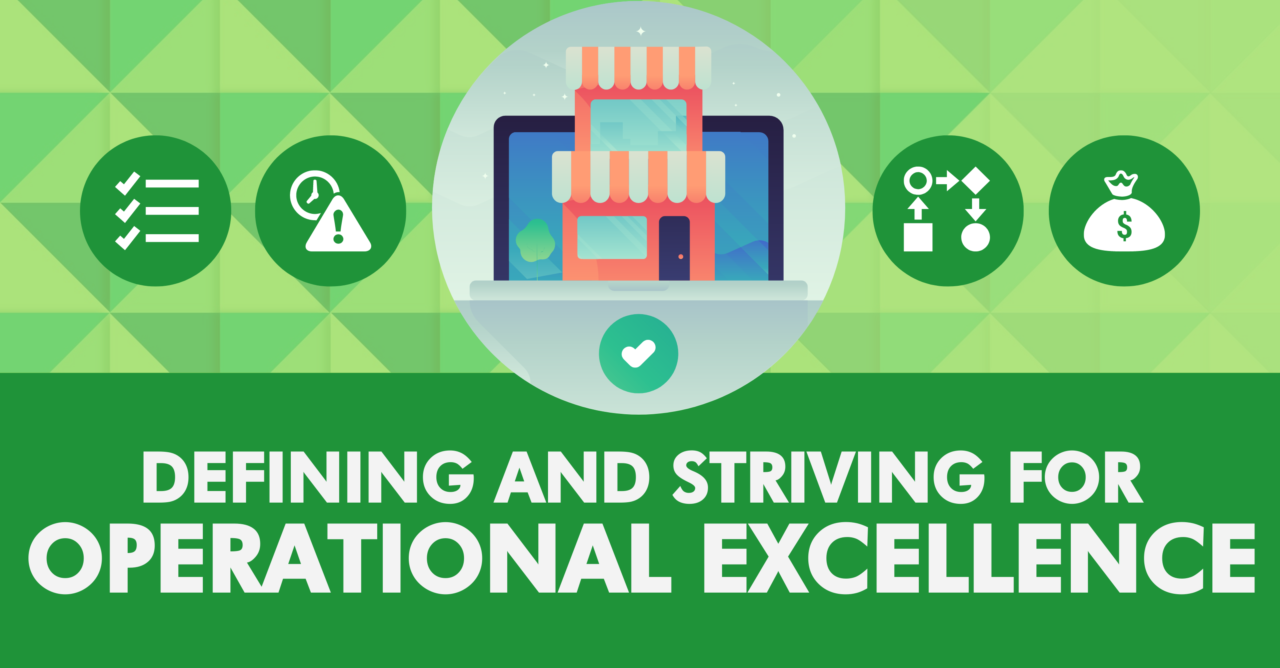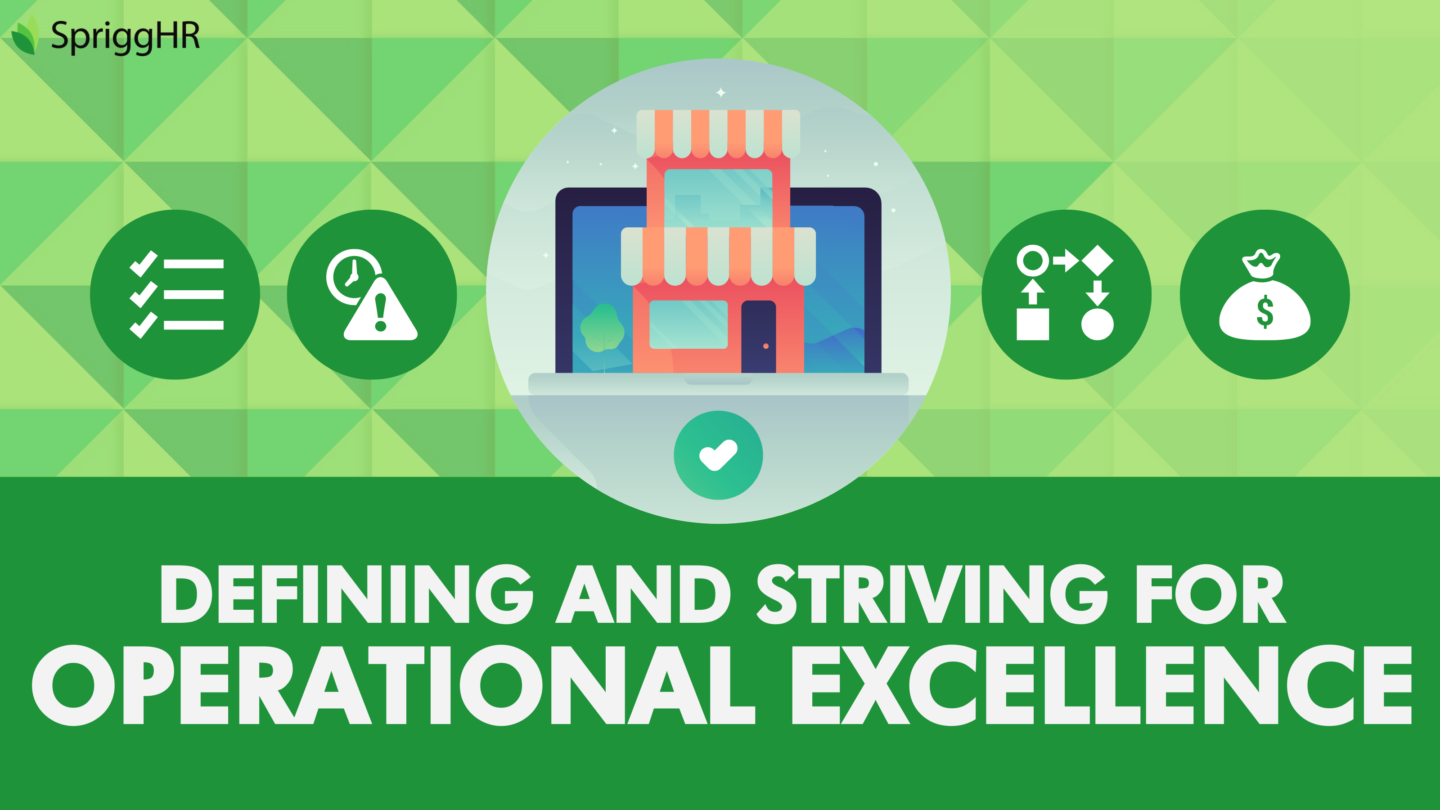
Defining & Striving for Operational Excellence
Understanding Operational Excellence
Understanding and defining Operational Excellence (OE) is an essential first step in any organization’s journey to success. Without an actionable definition of OE, it becomes very difficult to align an organization around new business methodologies and focus team members on achieving results.
The problem is, Operational Excellence is not always easy to define. Many descriptors are too broad in how they choose to define OE, while others set parameters so narrow that it ends up being too focused in scope.
Oftentimes, Operational Excellence is defined under vague terms, referred to under descriptors such as, “Being world class”, “Being the best globally”, or “Achieving excellence in everything we do”. While these seem like strong motivators on a surface level, it is quite difficult to translate these parameters into practical and measureable business activities. This ambiguity also poses the risk of leaving OE up to interpretation. This can produce too many different understandings of how OE manifests in an organization, and as a result, employees do not have a clear roadmap to follow for achieving it.
In order to achieve Operational Excellence, you must begin with a strong definition that everyone in the organization can understand and know how to go about achieving its elements.
What is Operational Excellence?
To properly define Operational Excellence, we first need to get a grasp on its fundamental components, primarily consistency and reliability.
Operational Excellence: Consistency & Reliability
It is important to recognize that Operational Excellence alone does not guarantee industry-leading success. Rather, OE focuses on consistent and reliable execution.
When it comes to the strategic decision-making that goes into competing in markets, what products to produce, where to manufacture, how to distribute, etc., Operational Excellence is merely the framework, not the means to the end. These logistical decisions are what make up the organization’s strategy. It is only through a combination of a strong business strategy AND a good understanding of Operational Excellence that your organization can yield successful results.
Taking this into consideration, Operational Excellence should be defined in such a way that ambiguity is minimized, and an actionable and measurable guideline is outlined to employees. Building on the components of consistency and reliability, a strong definition could be:
Operational Excellence is evidenced by results. Given two companies with the same strategy, the Operationally Excellent company will have lower operational risk, lower operating costs, and increased revenues relative to its competitors, which creates value for customers and shareholders.
By placing an emphasis on consistency and reliability, this definition clearly defines its strategy as being implemented on an ongoing basis. It is not exclusive to a quarterly or annual fad or trend. Instead, it is sustained, disciplined delivery that leads to excellence.
Why Should You Strive for Operational Excellence?
While the above stated definition is detailed and concise, there is an even simpler definition that works more to encapsulate the essence of what Operational Excellence looks like on an everyday basis:
Each employee can see the flow of value to the customer and will readily address any gaps in value before it reaches the customer.
This definition of Operational Excellence shows that it can be applicable to every level and every person in an organization. It is clear, concise, practical, actionable, and teachable. Because of how easy it is to grasp, employees immediately understand that in their respective areas, there should be a visible flow of product or information. In addition, they should be able to recognize whether that flow is normal or abnormal, and what that action is to be taken if it is anything short of excellent.
By understanding Operational Excellence on these two levels, one being a detailed and actionable idea of what OE aims to accomplish, and the other outlining how OE manifests in an organization, we can begin to recognize the value that successful Operational Excellence can influence in a company.

Principles that Drive Operational Excellence
Once you understand what Operational Excellence should look like, there comes the challenge of distinguishing the steps to take in order to achieve it. However, achieving Operational Excellence is not as complicated as defining it.
By using the following principles as a guideline, you can begin to establish the path your organization should take and should soon be able to recognize the signposts that tell you that you are moving in the right direction.
1. Design lean value streams.
Establish on paper an end-to-end value stream flow, beginning from the time you receive an order or request for service until the time it gets delivered. On your map of the organization’s future, information is given to only one process in the value stream. All other processes know what follows, because information can flow with the product through the connections created from that point. The key to this is connection – material and information moves only when the next process requires it.
2. Make lean value streams flow.
Move from paper to the real world of operation, implementing a self-sustaining value stream that results in Operational Excellence.
Begin this step by providing formal training, including a review of the organization’s current-state value stream map, the guidelines for flow of value, and the implementation plan. All trainees should be taught the ultimate destination of Operational Excellence, and the overall goal for business growth.
3. Make flow visual.
The next step, after taking the design from paper to a physical creation of the framework for flow, you must make this flow visual so that every employee at every level can see how processes are connected both to one another and to the client. In Operational Excellence, visual indicators in the operation process should have something to do with the flow or progression of the flow of product to the customer.
4. Create standard work for flow.
Your next step should be to apply the concept of standard work to that flow. While standard work is applied at the site of the processes, you should aim to establish work between the standard processes as well. Targeting the connections established between processes helps to stabilize the complete end-to-end flow, reducing variation in product and promoting consistency in the overall flow.
5. Make abnormal flow visual.
A key component to Operational Excellence, as defined above, is the employee’s ability to recognize when abnormal flow is occurring. The driving force behind this effort is in the rigid definition of what normal flow looks like. When employees have a strong grasp on normal flow, they should be able to see when or before abnormal flow happens and know how to correct it and prevent it from occurring in the future.
6. Create standard work for abnormal flow.
Though you have taught employees to adjust the flow to maintain it, it is bound to break down on occasion. That is why it is important that you implement a course of action that any employee can take when abnormal or broken flow occurs, reducing the amount of times they call supervisors and staying efficient in their efforts to keep the flow on track. This is done by creating standard work for when abnormal flow occurs.
7. Have employees who are in the flow improve the flow.
Once the final part of the flow is turned over, delivering value to the customer, the employees who continue to work in the flow need to be able to maintain and improve their level of performance using continuous improvement tools. This does not manifest as a never-ending journey of eliminating waste. Rather, it involves the operations side of the business achieving a level of performance that enhances business growth, and then maintaining and improving those particular performance methods to support further growth.
8. Perform offense activities.
Operational Excellence is all about business growth. It gives management the opportunity to step back from the operation itself and focus more on growing the business as a whole. This can only be done by reducing the amount of responsibilities that fall on operations management when delivering product to clients. By revamping their role in the flow of value, management can begin to involve themselves in the process that evolves the business into an industry-leading competitor.
The Continued Pursuit of Operational Excellence
Defining and bringing Operational Excellence into existence can be a complicated process. For starters, excellence is relative. It can shift over time, and what looks like business excellence today may not be the same tomorrow. Competitors, technology, and organizational paradigms all evolve, and your understanding of Operational Excellence should evolve alone with it.
Its implementation, however, can be easily corralled once you have a strong understanding of what Operational Excellence looks like. True OE manifests itself through integrated performance across revenue, cost, and risk. It can only be successful when all three of these areas are achieving at the same rate. The path to Operational Excellence is less about the balance between cost and risk, and much more about a disciplined approach that leads to gains in revenue, cost, and risk-prevention alike.
The key to success in achieving Operational Excellence starts with the right definition, one that everyone, at all levels of the company, can understand and know how to achieve.




